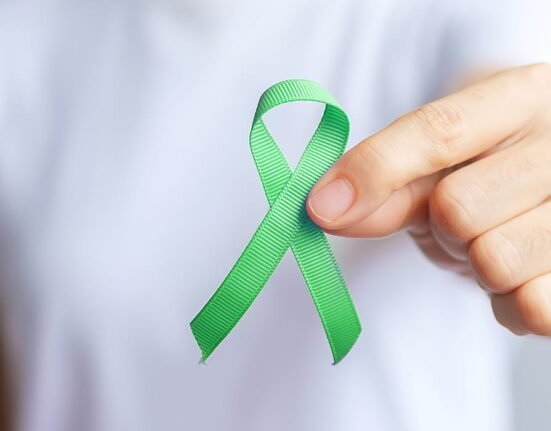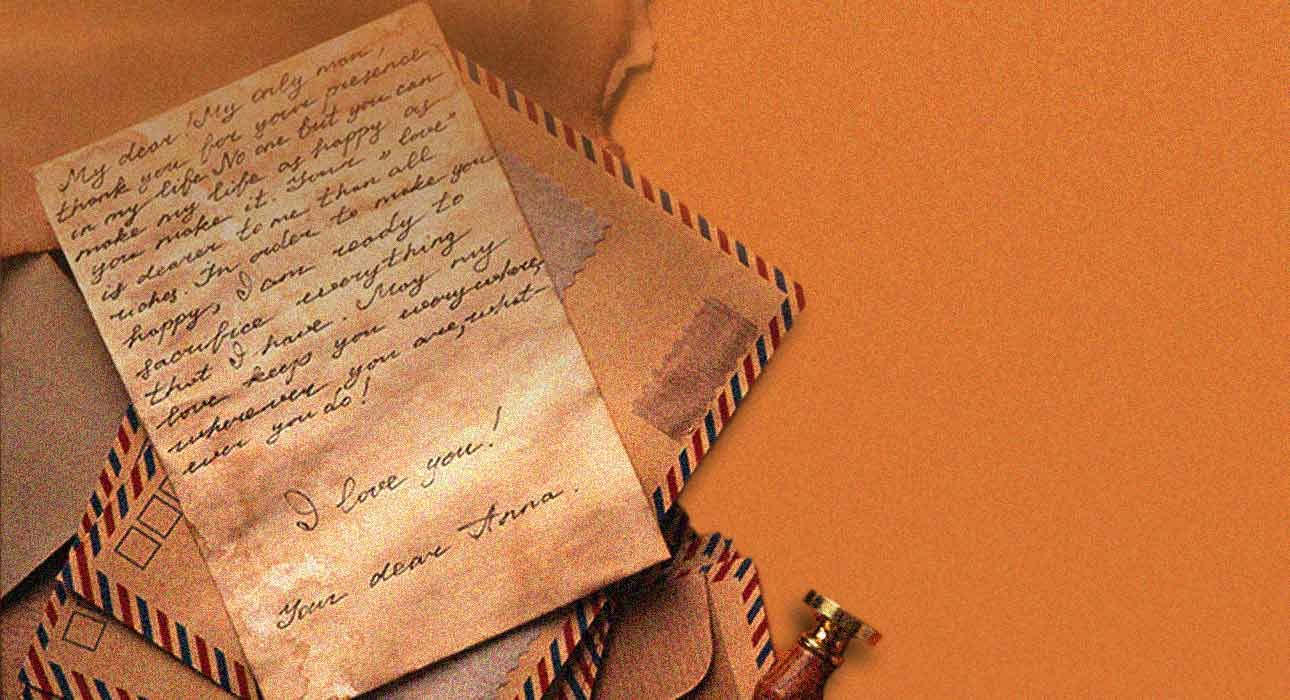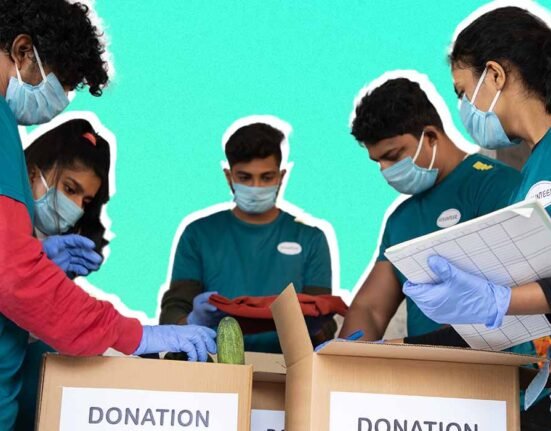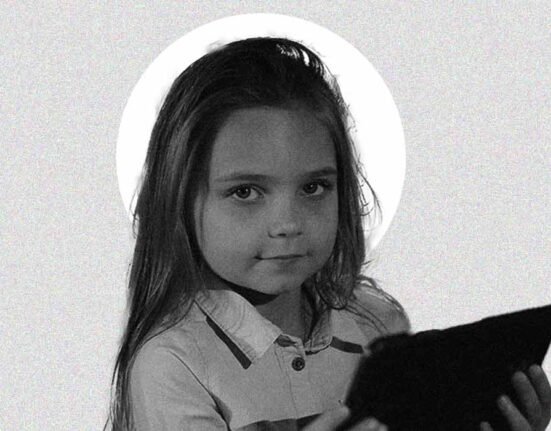Losing a loved one may be one of the most painful experiences in one’s life. The grief, the longing, the what-ifs, all tend to occupy an individual completely. It thus becomes crucial to find ways to keep our loved ones close to us. Heirlooms help multiple generations feel connected. A person’s memory is carried on by their efforts, their material things, and the lessons they may have learnt and further passed on as teachings. One entity that combines all these aspects is a letter; it is personalised, it is unique, and it holds a deep meaning.
A handwritten letter that may be passed down through generations, or be one that may start a new family tradition. It allows parents, grandparents, and even great-grandparents to be connected with and be a part of their future generations for a long, long time. These letters serve as a memory of the lives that were lived; they tell the story that may have somehow shaped the new generation as well. They provide love, hope, and deep connection in a bustling, chaotic world.
Read More: The Emotional and Psychological Impact of Losing a Life Partner
Link to the Past
Letters serve as a reminder of what once was. They tell the stories of those who lived before them. Letters and other heirlooms serve as a reminder of an individual’s history. They are material objects that people inherit as a token of their identity. A reminder that an individual is who they are because of those before them, because of the ways they lived, the experiences they had, and the work they did. These materialistic objects may provide people with a physical connection to their ancestors. The physicality of an object – its texture, colour, smell, wear and tear, and beauty- all have something to say about their ancestors’ memory.
Read More: Understanding Intergenerational Trauma and Its Effects on Family Mental Health
1. Letters as Windows Into Personal Histories
It can create a memory of a family anecdote or an individual’s personality, which can be passed on as is, without reiteration, also allowing further generations to have a much deeper connection. Letters are physical records of a person’s existence, their struggles, their wins, and their day-to-day activities. It is a chance to hear someone else’s voice, understand their life, and connect deeply with them. These letters contain small details which are often missed when explaining the overall history; they talk about the small wins, the quiet sorrows, the personal experiences, the individualistic views and beliefs that are required to completely understand one’s life.
This way of preserving someone’s life keeps their spirit alive. A letter from a soldier, a mother, a founder, a warrior, a CEO of a big company, an artist, a hard worker, an athlete, or a writer all tell different stories; personal histories. They act as a powerful tool for remembering not just the names of the people who came before us, but understanding them as complex individuals. Letters help strengthen a family’s identity by preserving the emotional dynamics of familial relationships. They carry memories through multiple generations, and ensure that future generations understand and feel connected to the emotional, cultural, and historical values that have shaped their family’s identity. They act as a keepsake of their ancestors.
Read More: Generational Silence and Emotional Healing: Why Speaking Up Matters
Power of Personal Connection
These letters can help in preserving an individual’s life story and keeping their memories alive. It can create a sort of intergenerational memory within the family, where the lived experiences of one generation become meaningful stories and intricate lessons for the next generation. They enhance the connection and sense of identity within families. They allow an individual to create bonds and connections with those not physically present. Individuals learn from their ancestors’ lives and move forward by creating their own personal story. A handwritten letter thus offers insights into the history, values, and traditions of an individual’s family.
For the recipient, a handwritten letter can be a source of emotional connection between the writer and the recipient. Reading about the stories of an ancestor’s struggles, how they dealt with them, and how they overcame them can instil strength and a sense of purpose. They serve as keepsakes of the past, acting as stories to be read by future generations. This allows for a much more intimate, personal, and deeper connection with their ancestors. The letters thus may serve not only as memoirs but also as morals and lessons.
The efforts, time, thought, and careful handwriting of a letter make it a much more intimate form of communication. It shows that the writer took the time to carefully think and curate the words they did write, shaping how future generations view them and their lives. Thereby creating a personal connection through words, without actually being physically present. These letters then become more than just a means of preserving one’s life story; they preserve their feelings, their emotions, and their first-hand experiences and learnings.
Read More: Understanding Food, Memory, and Generational Trauma through a Psychological Lens
Emotional Inheritance
Letters carry more than just words; they are symbols of emotional inheritance. The emotions and feelings of love, hope, resilience, sacrifice, and strength expressed in letters are passed down to the readers. This creates an enduring emotional link across multiple generations. Handwritten letters have something incredibly special about them – the charm and personal touch they carry is something that emails and text messages often lack. The personal form of communication that letters offer makes them precious heirlooms. These heirlooms create a legacy, as people can physically touch and hold them. This serves as a reminder to pause and reflect on our lives, connect with the past generations and all they did, and think about the ones yet to come.
A handwritten letter can transmit emotions across time. When we read a letter written by someone we love or admire, the emotions expressed can be clearly understood and felt. The feelings of the writer are passed down to the reader. This creates an emotional bond between the two.
Read More: True Essence of Sacrifices in People’s Lives
1. The Emotional Legacy of Letters
Letters can be of various kinds, and their purpose can vary. For example, a mother may write to her child about overcoming hardships; this letter would then be filled with hope, encouragement, resilience, and care. Or a father may write about his great achievements; this letter would have aspects of strength, wisdom, insight, and guidance. When families pass down such letters through generations, they also pass down the teachings and feelings with them. The emotional legacy of hope, encouragement, wisdom, and guidance continues to live on with the passing of the letter. The writer’s care, love, or concern persists way beyond them. This emotional inheritance ensures bonds to sustain and also enables new bonds to form, with or without the physical connection between the writer and reader.
2. Strength Through Shared Experiences
Reading such letters may help individuals better connect with their families and better gain an understanding of their complex familial emotional heritage. Individuals may find comfort in realising that their ancestors faced challenges and hardships similar to their own, which could give them courage and strength to keep going. They may also serve as a reminder that feelings are complex yet normal, and that people do share similar experiences.
Finding commonalities may encourage and motivate them to push through, fight back, and keep going. This creates an emotional continuity across multiple generations. It also offers a sense of belonging and connection beyond that of the present moment.
Conclusion
A Handwritten letter as heirlooms reminds us that emotional inheritance is as important as material legacy. They are vital in connecting the past with the future. Letters efficiently transform anecdotes into intergenerational memory. Reading a letter from our ancestors helps us understand our complex heritage. It serves as a souvenir of the past and binds multiple generations together. They serve as reminders of timeless emotions like love, grief, hope, and care. They encourage future generations to be resilient and strong. Letters are the true heirlooms of a family, carrying forward memories and emotional legacies of those who came before us. They create deep, timeless bonds across generations. Handwritten letters are the echoes of the previous generations and act as guidance for the present ones.
FAQs
1. What makes a handwritten letter a valuable heirloom?
A handwritten letter is a unique and personal heirloom because it physically captures a person’s existence, hardships, and day-to-day life. Letters efficiently preserve a person’s voice, thoughts, and emotions. Moreover, the effort, time, and careful writing of a letter reflect the care of the writer, creating a deep, intimate connection that can be passed down through generations.
2. In what ways are letters symbols of emotional inheritance?
Emotional inheritance is the passing down of emotions and feelings, such as love, hope, resilience, and strength, from one generation to the next. Letters are crucial symbols of emotional inheritance, as they transmit a writer’s emotions across time. When someone reads a letter, they can feel the emotions expressed, thereby creating a lasting emotional bond. It further ensures that the legacy of care, wisdom, and guidance continues to live on through the passage of these letters.
3. How do letters help new generations connect with their ancestors?
Letters serve as a tangible link to the past; they connect current generations with their ancestors. Letters tell the complex stories of those who lived before them. This allows individuals to remember their past generations beyond just names. It helps to understand them as complex individuals. Thus, helps strengthen a family’s identity and emotional ties.
References +
Bags, S. (2024, September 19). Love In Words: Crafting Heartfelt Letters & Family Bonds. SACHI Bags. https://sachi-bags.com/crafting-heartfelt-letters/
Barclay, K., Evans, T., Begiato, J., King, L., & Barnwell, A. (2025). Inheriting the family: objects, identities and emotions. https://library.oapen.org/handle/20.500.12657/98185
Gloyn, L., Crewe, V., King, L., & Woodham, A. (2018). The ties that bind. Journal of Family History, 43(2), 157–176. https://doi.org/10.1177/0363199017746451
NeuroLaunch.com. (2024, October 18). Emotional Inheritance: Unravelling generational patterns and their impact. https://neurolaunch.com/emotional-inheritance/
The healing role of heirlooms in honouring a loved one’s legacy. (n.d.). Let Your Love Grow. https://letyourlovegrow.com/blogs/blog/the-healing-role-of-heirlooms-in-honoring-a-l oved-one-s-legacy?srsltid=AfmBOoqVPvbGnK2vBs9jZ5OGvQlQFbutYnpE8aQfkc AuAeg1dUkY9W-Q
What family heirlooms can teach people about their histories. (n.d.). The Swaddle. https://www.theswaddle.com/what-family-heirlooms-can-teach-people-about-their-his tories













Leave feedback about this